There are many different aspects to understand with lenses, with the lens technology continuing to improve greatly over the last few years.
Some of the variants and options with lenses are discussed as follows:
Focal Length Fixed or Zoom
Lenses are essentially of two main categories, either fixed focal length or variable focal length or zoom lenses. Zoom lenses are available in many different focal length ranges, some popular ranges are as follows 10-20mm, 17-55mm, 70-200mm, 200-400mm.
Generally zoom lenses are available with apertures of f/2.8 or greater, however fixed focal length lenses can be available with larger apertures of f/1.4 and may be better for low or available light photography. Zoom lenses are great for landscape photography, where you may need to vary the angle of view to accommodate different aspects.
Small or Large Aperture Lenses
Some lenses come with a large maximum aperture of f/1.4 and these as mentioned above, are very good for low light photography. Other lenses may have a maximum aperture of f/2.0, f/2.8, f/4.0 or f/5.6. The lenses of maximum aperture f/4.0 or f/5.6 are not so good for available light photography but are considerable cheaper to purchase.
Coverage or Crop Factor
Some digital camera lenses are designed for the full sensor size of standard film (24x36mm) and other lenses are desigmed for a smaller sensor size approximaately half the size of the standard film frame. For Canon cameras the smaller coverage lenses are designated EF-S lenses and for Nikon cameras these lenses are designated DX lenses. The smaller coverage lenses are generally more compact and cheaper to purchase than the full frame lenses.
Fixed or Variable Aperture
Some zoom lenses have a variale aperture and the aperture of the lens changes as the lens zooms from minimum to maximum focal length. As an example, at the shortest focal length the lens may have an aperture of f/3.5 and at the longest focal length the aperture may be f/5.6. These lenses are generally cheaper to purchase, but may not be as convenient to use, particularly in low light situations.
Manual or Automatic Focus
Lenses may have manual or automatic focus. Many older lenses are manual focus, however most lenses now are constructed with automatic focus, with a manual option. Sometimes it is preferred to manual focus a lens when close up to the subject or in low light situations. Many manual focus lenses can be purchased quite cheaply on the second hand market.
Image Stabilisation or Vibration Reduction
Many lenses are available now with image stabilisation IS (Canon) or with vibration reduction, VR (Nikon), this is especially of advantage with lenses of 70-100mm or longer. This capability allows the lens to be used with much lower shutter speeds to still give sharp images. These types of lenses can give a three to four stop advantage to use lower shutter speeds.
Micro or Macro with close focussing
Micro or Macro lenses allow the lens to focus much closer than a normal lens. Many of these lenses will allow you to focus to represent the subject as life size on the image, this will give an effective subject magnification of 1:1.
Correcting perspective (Tilt or Shift)
Some lenses are available which can tilt from the central position and this will allow for perspective correction, in particular when taking images of buildings and architecture. These lenses also, in many case can shift, to a limited extent each side of its central position and this can be used to take several images and stitch them together with software after the image has been taken.
Focussing Speed
Some lenses will focus from a motor in the camera body which is coupled to the lens and other lenses may incorporate a focussing motor built into the lens itself, generalyy a lens with its self contained motor is faster focussing.
Enhanced Lens Materials and Coatings
Many lenses employ sophisticated materials today, such as extra low dispersion glass, super multicoating materials over the glass and nano coatings, to give the lens better performance in respect to chromatic aberations, color fringing and other undesirable effects.
A few examples of different types of lenses are shown below:
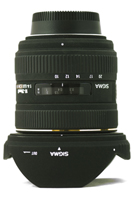
A 10-20mm f/4.0 fixed aperture zoom lens is very suitable for wide angle expansive landscapes. These lenses can also give a very great deapth of field, DOF which is very usefull for landscapes.
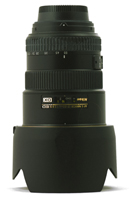
The 17-55mm f/2.8 fixed aperture zoom lens is a great general purpose lens for low light use and for general photography. It covers a reasonably wide focal length and has quite a low aperture for low light photography.
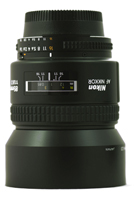
The 85mm f/1.8 lens is a very suitable lens for portraits and low light photography due to its large aperture. With the low aperture it enables photographers to use selective focus with a shallow depth of field DOF. It will also enable photographers to blurr our the background to give a more pleasing image.
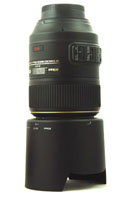
The 105mm f/2.8 Micro lens is useful for general telephoto photography. This focal length lens is also great for tight portraits and also for the photography of subjects such as flowers and animals.
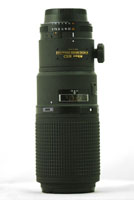
The 200mm f/4.0 telephoto Micro lens is great for insects, butterflies and also as a general purpose telephoto lens.
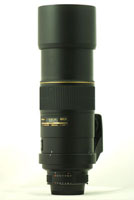
The 300mm f/4.0 telephoto lens is very suitable for wild animals and birds. It gives additional distance for shy critters. Sometimes teleconverters are used with this type of lens to increase the focal length by 1.4 times, 1.7 times or by 2.0 times, however teleconverters will also increase the aperture of the lens making them less suitable in low light levels.
